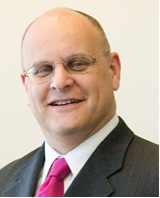This is a book about reimagining power.
For generations, the locus and nature of power seemed settled, reflected in the vertical lines of political authority. National and state governments sat at the apex, writing laws, promulgating rules, distributing resources, and running the country. Cities and metropolitan regions—the places where the overwhelming majority of the population lives and where national wealth is disproportionately generated—resided at the bottom, often acting as administrative arms of higher levels of government more than as agents in charge of their own future.

This picture, hierarchically neat and textbook tidy, is radically changing. The location of power is shifting as a result of profound demographic, economic, and social forces. Power is drifting downward from the nation-state to cities and metropolitan communities, horizontally from government to networks of public, private, and civic actors, and globally along transnational circuits of capital, trade, and innovation.
These changes are shattering traditional notions of where power lies, the people and institutions that wield it, and how transformative change occurs. New sets of leaders are upending conventional wisdom about who solves problems in an age with too much partisan conflict and not enough common purpose.

Power is not what it used to be. It is less confined to the authority of government alone and more fueled by the market potential that comes from the concentration of economic, physical, and social assets in real places. It is less defined by scales of influence distributed across layers of government and more derived from sources of civic strength that come from collaborating across sectors.
The exercise of power is also not what it used to be. The ability to get things done has shifted from command-and-control systems to the collective efforts of civil society, government, and private institutions. It is vested in and affected by leaders and institutions that convert market and civic power into fiscal, financial, and political power.
In sum, power increasingly belongs to the problem solvers. And these problem solvers now congregate disproportionately at the local level, in cities and metropolitan areas across the globe.
Meet the AuthorsDo Something
Today, progress is evident among vanguard cities and metropolitan regions that are inventing new models of growth, governance, and finance. These novel and distinctive models focus intentionally and purposefully on inclusive and sustainable outcomes as measures of market success.

Growth
These vanguard cities are igniting growth by leveraging their distinctive sectors to commercialize research, seed and grow businesses, and create quality jobs. Local leaders are aligning their educational systems to provide workers with the skills they need to obtain jobs in an advanced economy and are seeking solutions to deep-seated poverty through early childhood education and school-to-career About cities by Jeremy NowakRead More
Governance. These vanguard cities are catalyzing growth through forms of governance that align the distinctive perspectives of government, business, philanthropy, universities, and the broader community. Governance is being driven by collaboration rather than coercion, stewarded by diverse networks rather than by elected decisionmakers alone, and characterized by iterative problem solving rather than by rigid and prescriptive rulemaking. Governance is also being exercised by new institutions that are designed to leverage the public legitimacy of government with the entrepreneurialism of the private and civic sectors.
As politics has become nationalized, problem solving has become localized.
Finance. These vanguard cities are capitalizing growth by using a vast array of tools to fund investments in innovation, infrastructure, and inclusivity initiatives. Cities are bankrolling the future by converting their market power into tangible, investable resources. In the process a new field of metro finance is emerging that aggregates and deploys capital from community, national, and global sources to align investments with local economies and priorities. The public sector is embracing both traditional mechanisms such as voter referenda and new mechanisms such as value capture to invest in physical and human capital, infrastructure, and children. At the same time, private and civic capital is spurring innovation by investing in firms and intermediaries that translate research into tangible products. To make progress on these fronts, local governments are beginning to tackle legacy liabilities, to focus tax revenue on what works, and to manage public assets in more productive ways.
New Localism is a nascent phenomenon, a work in progress. The harsh reality is that the dramatic devolution of responsibility has not been met with a concomitant delegation of capacity or resources. Twenty-first-century problem solving is essentially taking place amid twentieth-century financial and institutional arrangements that are antiquated and inadequate. If cities, in short, are to be the world’s problem solvers, municipalities must grow new sets of leaders and invent new intermediaries and institutions that align with this disruptive era and its heightened importance. Cities and their partners must think anew about everything from the fine print of financial instruments to the vehicles for cross-sectoral collaboration to the management and disposition of public assets.
There is no doubt that a growing number of cities are stepping up to this challenge with newfound confidence. A restructuring economy has placed a premium on high-skill and high-productivity industries clustered in more dense, urban environments. Together with changing demographic preferences, these economic dynamics have increased the market value and market power of such communities. New technologies that enable driverless cars and personalized medicine are not just being invented in cities; they are being tested and deployed there. Cities are on the front line of the next economy.
The stated aspiration of the Trump administration to “deconstruct the administrative state” is ironically elevating the city-state as the locus of problem-solving activity.
This shift in where and how America solves problems represents the formative stage of New Localism. While deeply rooted in American civil society, today’s New Localism emerged out of crises in local economies and in response to the vacuum left by higher levels of government. Action had to be taken to rescue communities and cities from decline. New Localism exists as much because of need as by design, reflecting both the limited capacity of the local public sector and the narrow reach and vision of conventional private sector investors. The convergence of economic crises, the absence of solutions at higher levels of government, and the American inclination for subsidiarity makes New Localism urgent and inevitable.
New Localism has the potential to outlive this moment of crisis and change, to capitalize on the profound economic and demographic shifts of the past four decades, which have favored an urban resurgence in the United States. Markets are revaluing cities and New Localism is the vehicle through which leaders can translate market power into the resources that can finance the future. This is how communities will survive and thrive in our current age.

Populism and New Localism
While the rise of a very vocal populism has received significantly more attention than the quiet problem-solving efforts of New Localism, both are the products of deep structural dynamics that have resulted in widespread fiscal distress, job insecurity, and cultural anxiety.
It is tempting to view New Localism as a mere side product of the angry populism that has swept the United States and Europe. At its core, populism is a revolt against elites, whether economic or political. And as populists have altered the national discourse, they have—sometimes intentionally, sometimes not—attacked and weakened the nation-state as well as supranational institutions, and empowered local forces. The stated aspiration of the Trump administration to “deconstruct the administrative state” is ironically elevating the city-state as the locus of problem-solving activity.
The collaborative networks of New Localism, we believe, act as a countervailing force and cultural antidote to the rise of right-wing populism. Populism has reenergized a politics—most prominently represented by Donald Trump in America and the Brexit coalition in the United Kingdom—that is nostalgic in focus, nationalistic in tone, and nativist in orientation. The rhetoric of this populist politics seeks to create walls, literal and figurative, that inhibit the flow of people, goods, capital, and ideas across borders; the essence of the modern economy.
The populism on the left, while devoid of national and ethnic chauvinism, often is characterized by a similar nostalgia for a world that no longer exists. Many of their positions take a far too simple view of multinational trade agreements and global economic institutions. Neither Bernie Sanders’s view of the federal government as the realm of most solutions nor Donald Trump’s notion of economic nationalism fits the new global or local reality.
In contrast to right-wing populism, New Localism embraces diversity rather than ethnocentrism and is curious rather than closed. In contrast to the political extremes of both the left and the right, New Localism is guided by pragmatism rather than by ideological fervor.
Still, the populism that defined the 2016 U.S. presidential election shares much of its origins with New Localism. It is rooted in the long economic restructuring and social transition that has exacerbated national income inequality and rattled the meaning of national identity. The core difference is that while populism has evolved into a national political strategy to exploit these grievances, New Localism is a problem-solving philosophy geared toward alleviating them.
In contrast to right-wing populism, New Localism embraces diversity rather than ethnocentrism and is curious rather than closed. In contrast to the political extremes of both the left and the right, New Localism is guided by pragmatism rather than by ideological fervor. New Localism governs with a long-term view toward to the future; much of populism campaigns on a shortsighted return to the past.
The problems of the new global age are significant. But the real solutions to these challenges will disproportionately come from the ground up. The more progressive variants of populism that seek to strengthen the safety net, reinforce investments in infrastructure and education, and protect consumers and the democratic franchise at large from the undue influence of money in politics are important complements to New Localism.
Buy The New LocalismLearn Something
But, as this book explores, the practical solutions to economic growth, economic inclusion, and environmental sustainability are more within the local domain than the national. Modern national and state governments seem unable to mount sufficient or sustained responses to modern challenges. Excessive partisanship has poisoned Congress and state legislatures and put representative democracy itself in a seemingly intractable state of gridlock and polarization.
The stalemate is compounded by structural fiscal challenges. In Dead Men Ruling, the Urban Institute’s Gene Steuerle shows how growth in the nonchild portions of Social Security, Medicare, and Medicaid programs and payment on the national debt are fueled by decisions made by prior Congresses; hence the title of his book. He bases his assumptions on Congressional Budget Office forecasts that by 2026, the federal government will be spending $4.1 trillion a year on entitlement programs such as Social Security, squeezing investments in housing, infrastructure, education, and research and development. In short, Congress has little “fiscal freedom” to shift investments to new challenges.
Thus, even prior to the onset of a divided Congress and the accession of the Trump administration, the federal government had diminishing ability to invest at scale in the future through research that would spur innovation, new infrastructure better aligned with the twenty-first-century economy, and the educational and other investments needed to support higher levels of economic inclusion. That responsibility had already devolved to society itself, to American cities and localities.
Photo by Dave Z via Wikimedia







